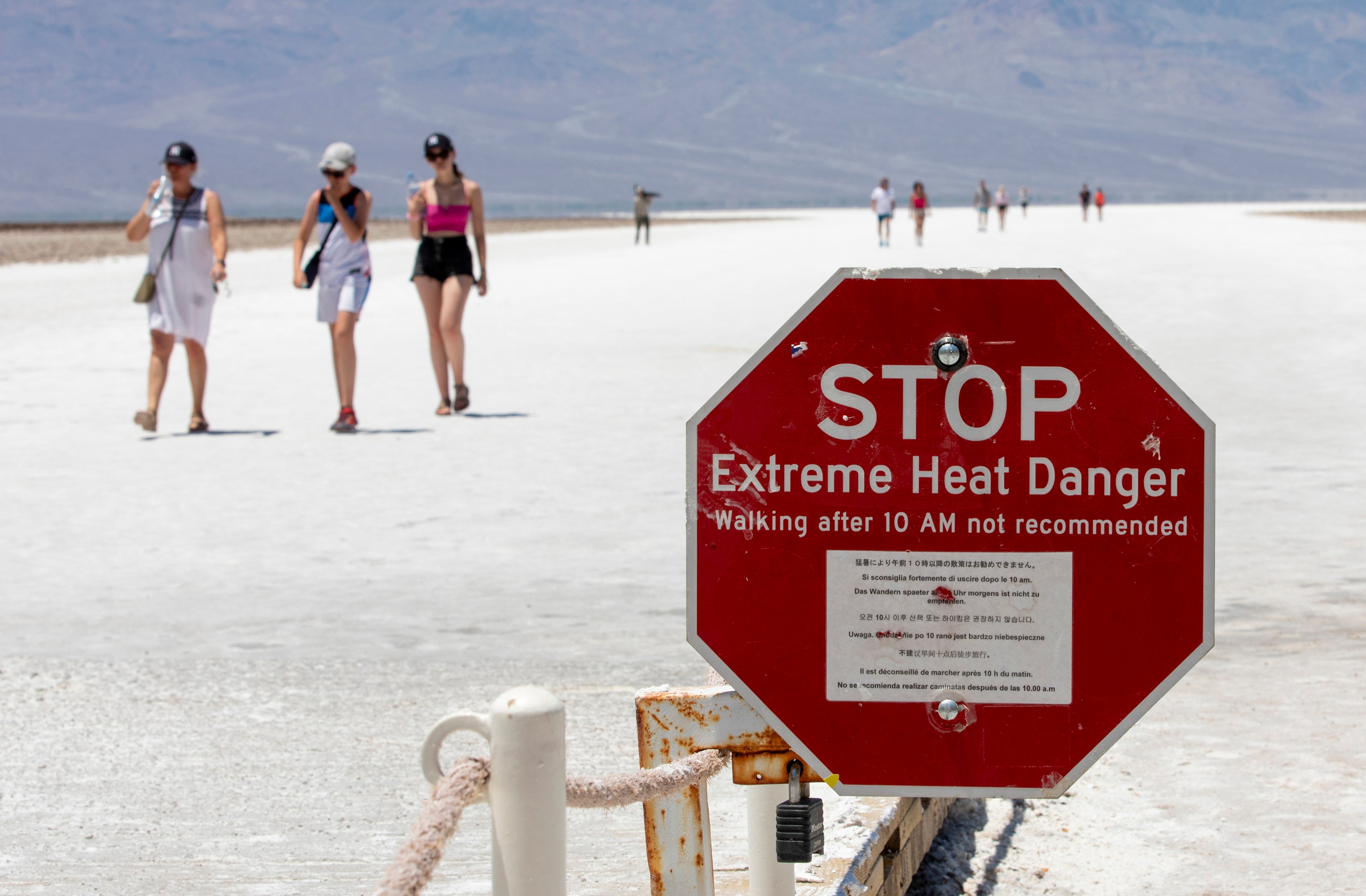Death Valley tourist hospitalized after burning feet on red-hot sand dunes
Death Valley holds the record for the hottest air temperature ever recorded on Earth — 134 degrees Farhenheit
Your support helps us to tell the story
From reproductive rights to climate change to Big Tech, The Independent is on the ground when the story is developing. Whether it's investigating the financials of Elon Musk's pro-Trump PAC or producing our latest documentary, 'The A Word', which shines a light on the American women fighting for reproductive rights, we know how important it is to parse out the facts from the messaging.
At such a critical moment in US history, we need reporters on the ground. Your donation allows us to keep sending journalists to speak to both sides of the story.
The Independent is trusted by Americans across the entire political spectrum. And unlike many other quality news outlets, we choose not to lock Americans out of our reporting and analysis with paywalls. We believe quality journalism should be available to everyone, paid for by those who can afford it.
Your support makes all the difference.A tourist visiting Death Valley had to be hospitalized after his bare feet briefly touched the blazing hot sands, causing him third-degree burns.
The tourist, an unnamed 42-year-old man from Belgium, was at Death Valley National Park on Saturday when the incident occurred. He reportedly lost his shoes while taking a short walk on Saturday at the park's Mesquite Flat Sand Dunes, according the National Parks Service.
The site provides visitors with the chance to hike routes of their choosing across the dunes. The tourist who was injured was reportedly wearing flip flops while walking on the dunes. At some point, he either lost his flip flop or the footwear broke, leaving his bare foot exposed to the blistering sand.
Others in his group had to carry him off the dunes and transported him to a ranger station for treatment.
Death Valley is known for being the hottest place on Earth, and thanks to the ongoing climate crisis temperatures in the region are only likely to increase. The southwest US has been enduring consistent triple digit temperatures this summer, and one individual died in Death Valley early this month on a day when temperatures reached 128 degrees Fahrenheit.

The hottest temperature ever recorded on Earth was logged in Death Valley in July 1913, when the air temperature reached 134 degrees Fahrenheit, according to the National Park Service.
On Saturday, the day the tourist was injured, air temperatures at the park reached 123 degrees, and a park official noted that the temperature of the dunes would have been hotter than the air.
Rangers treating the tourist transported him via ambulance to a helicopter pick-up spot, where he was flown to a nearby hospital. An initial attempt to connect with a helicopter failed due to the high heat preventing the aircraft from operating safely. Rangers were forced to take the man to higher elevation where the aircraft could land safely, according to CBS News.
The park service recommends that summer visitors to Death Valley avoid hiking in late morning and afternoon and stay within 10 minutes of a car with air conditioning to avoid heat-related injuries and illnesses. They also advised wearing a hat and sunscreen, bringing plenty of water, and eating salty snacks to assist with water retention.
The National Institutes of Health published a study last year detailing how air temperatures affect sand temperatures. According to the study, sand can reach more than 100 degrees once the air temperature hits 75 degrees. When the air temperature hits 90 degrees, sand can reach more than 120 degrees — enough to cause a first-degree burn.
Human skin can sustain a first-degree burn at 118 degrees, and a second-degree burn at 131 degrees, according to the National Institute for Standards and Technology. A third degree burn can occur after prolonged — several minutes or longer — exposure to temperatures over 120 degrees.

Join our commenting forum
Join thought-provoking conversations, follow other Independent readers and see their replies
Comments